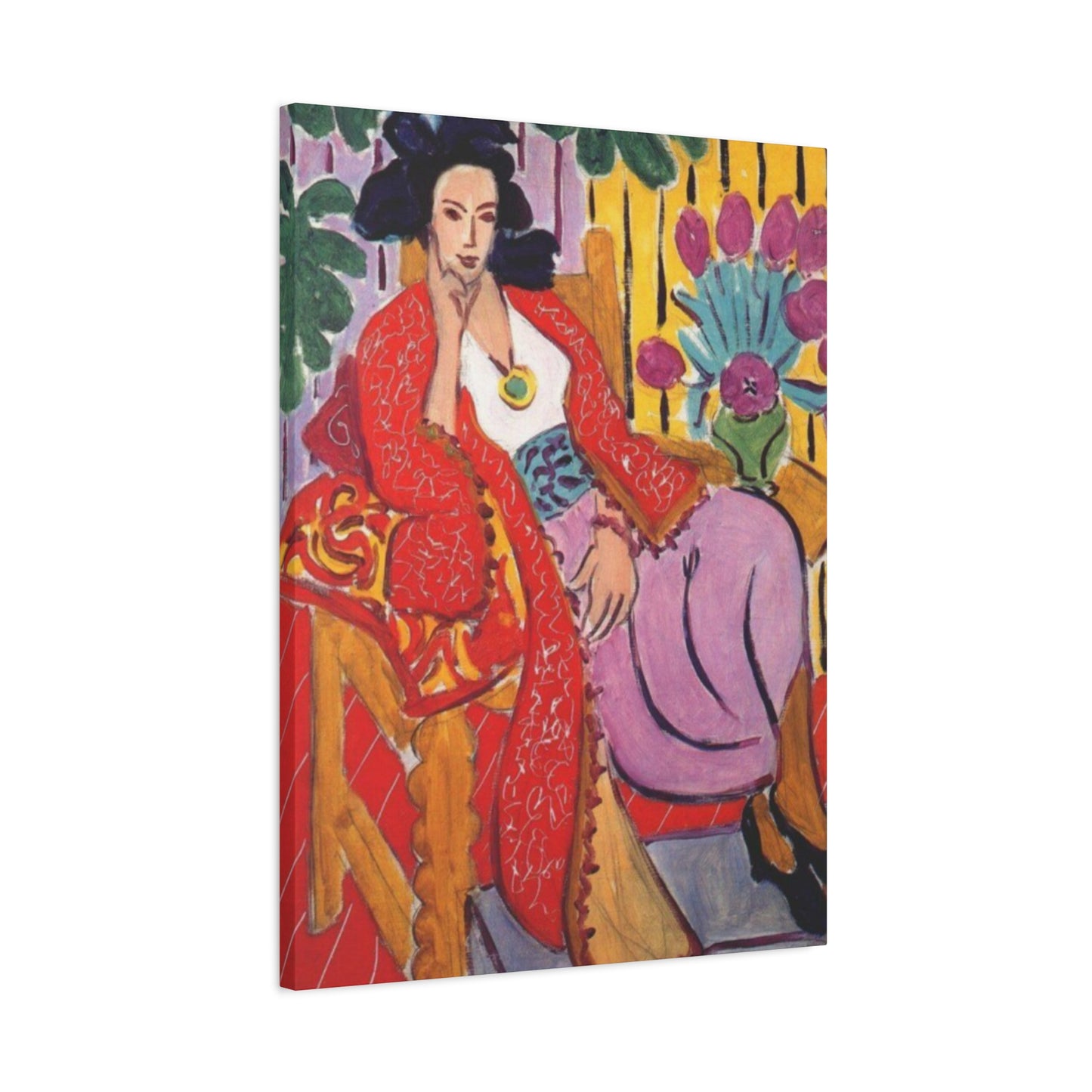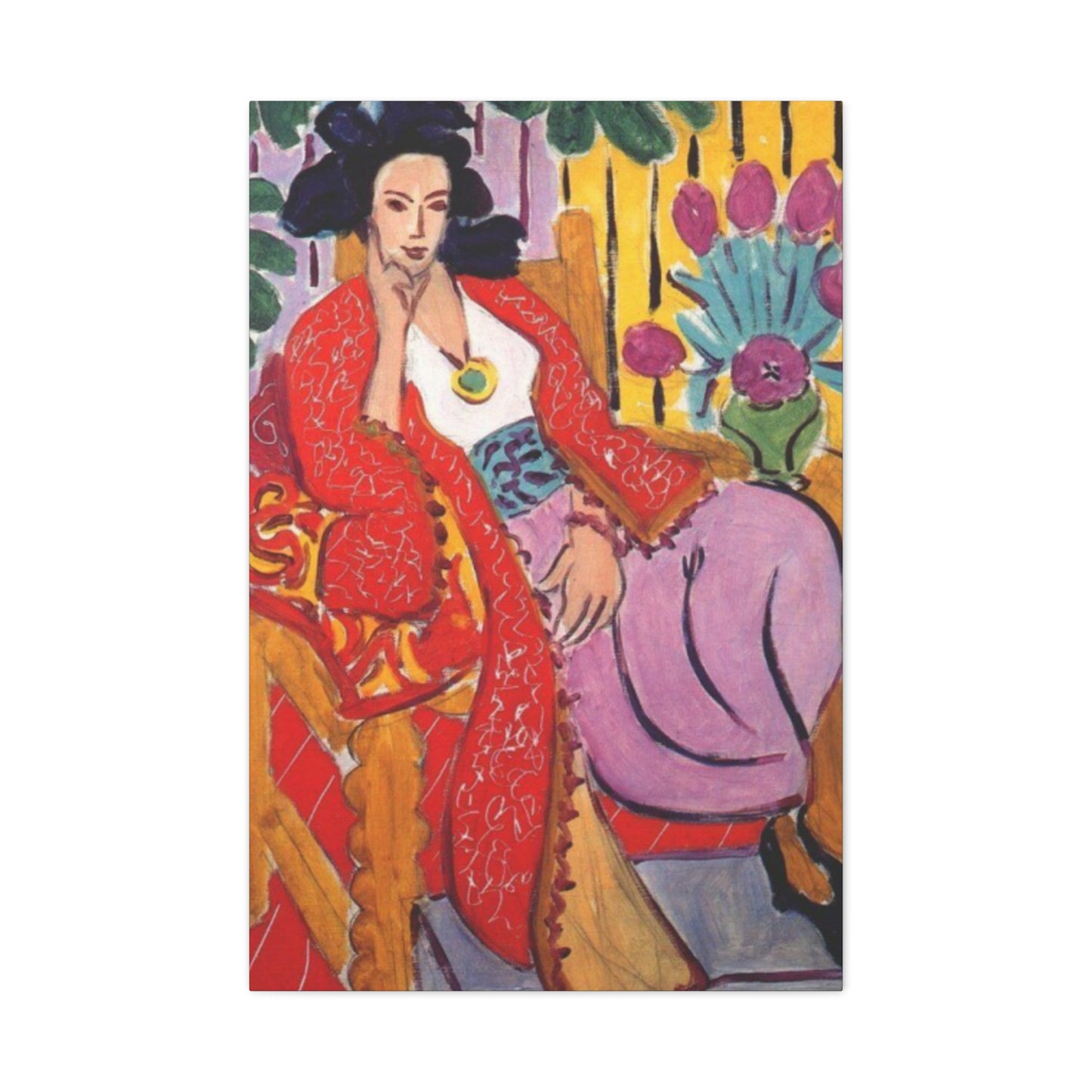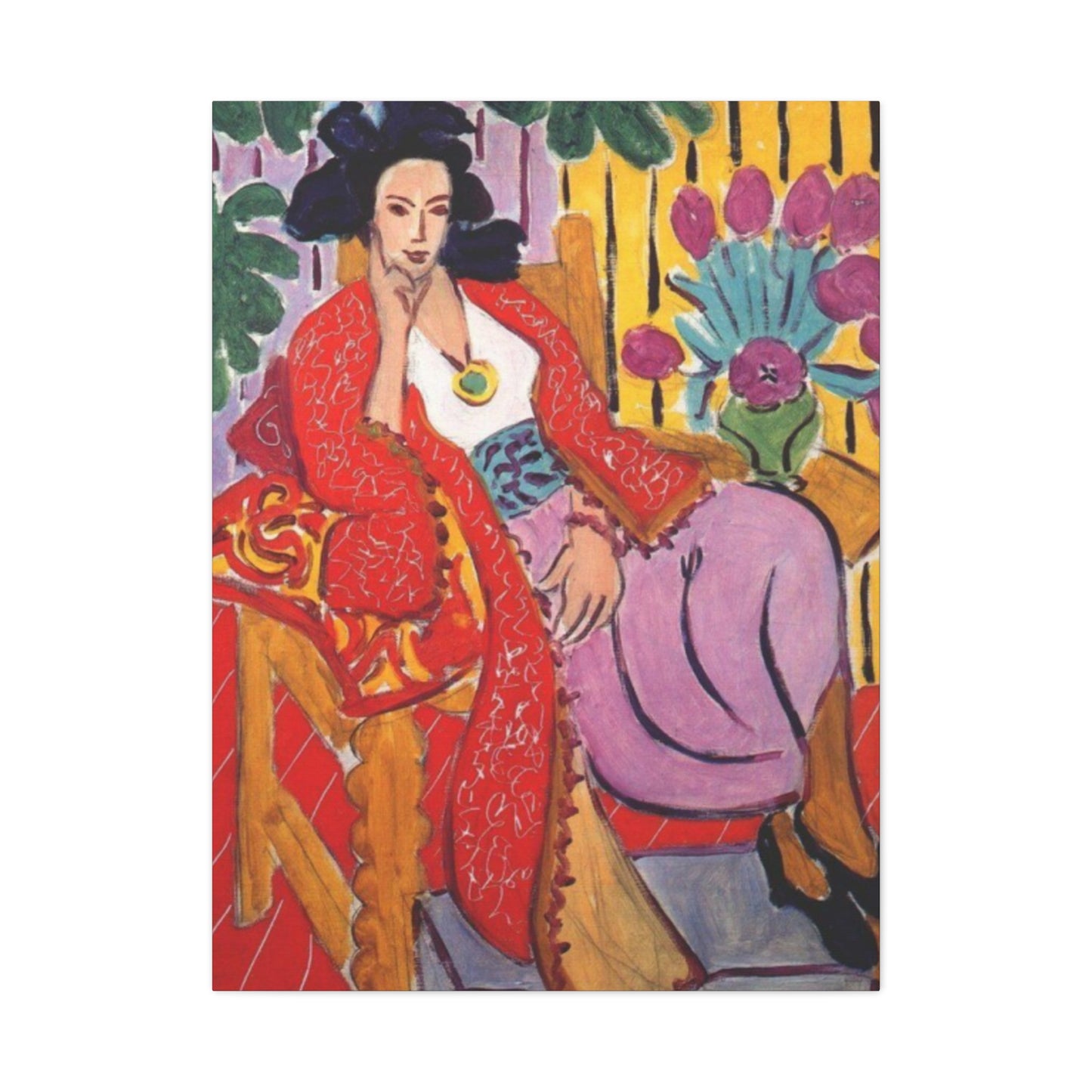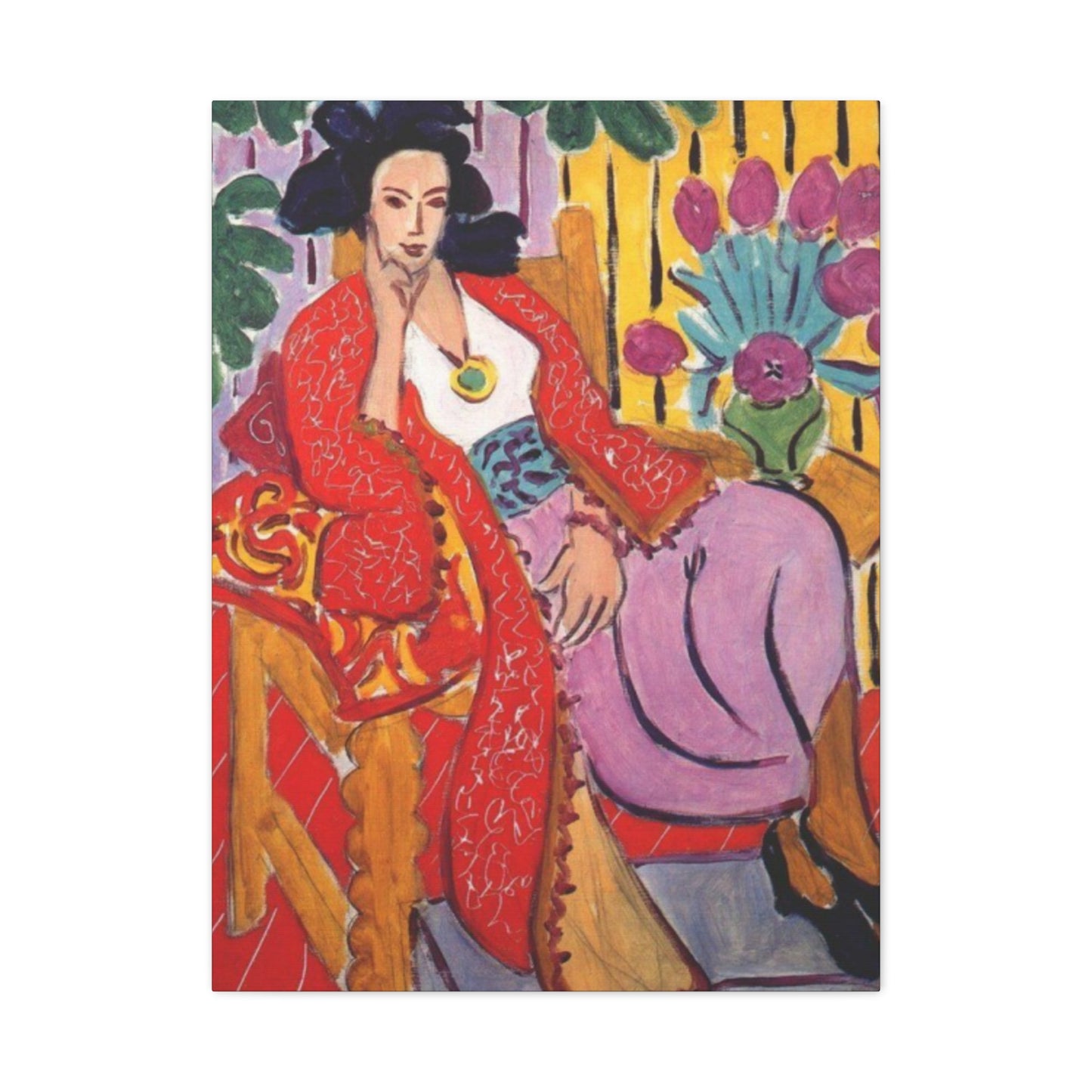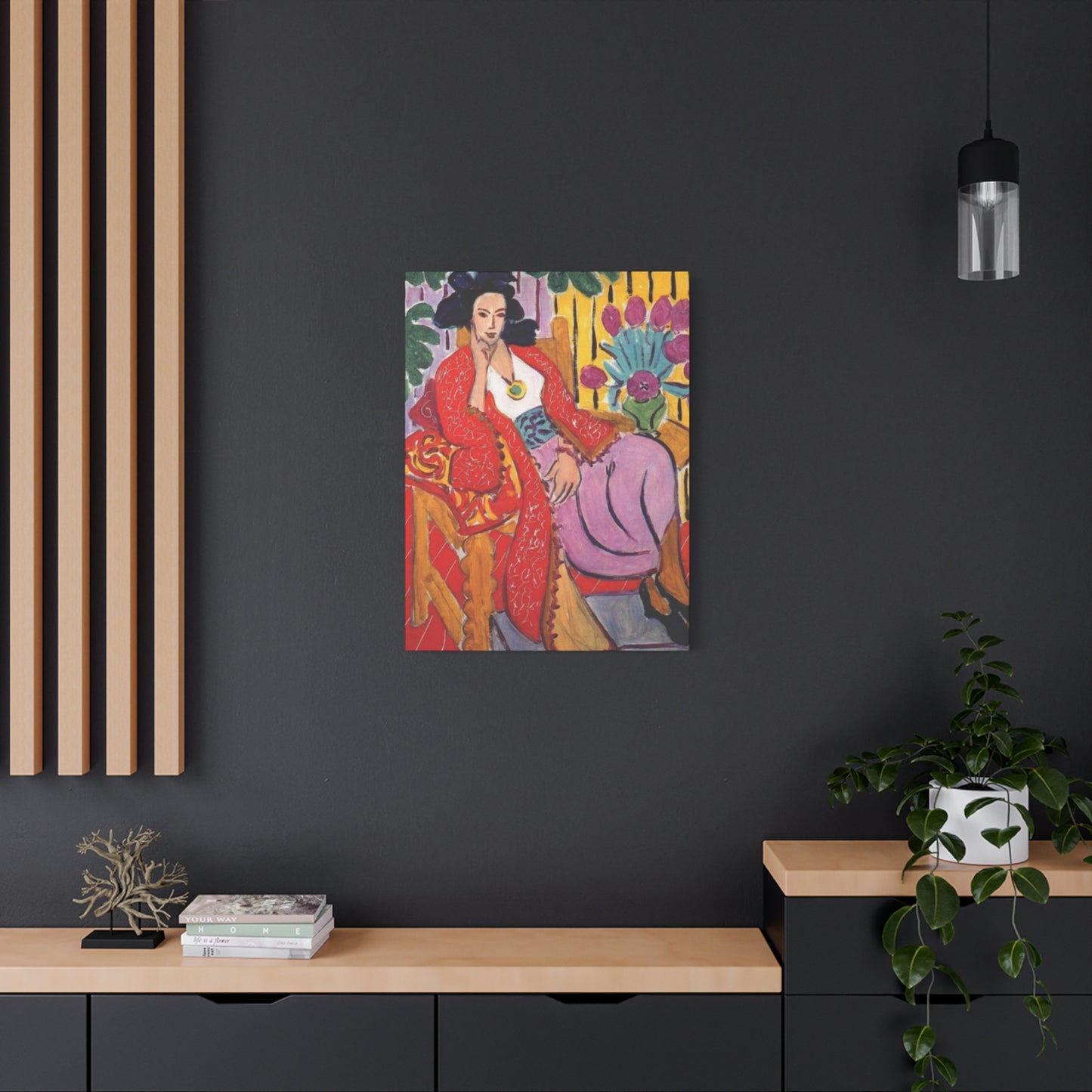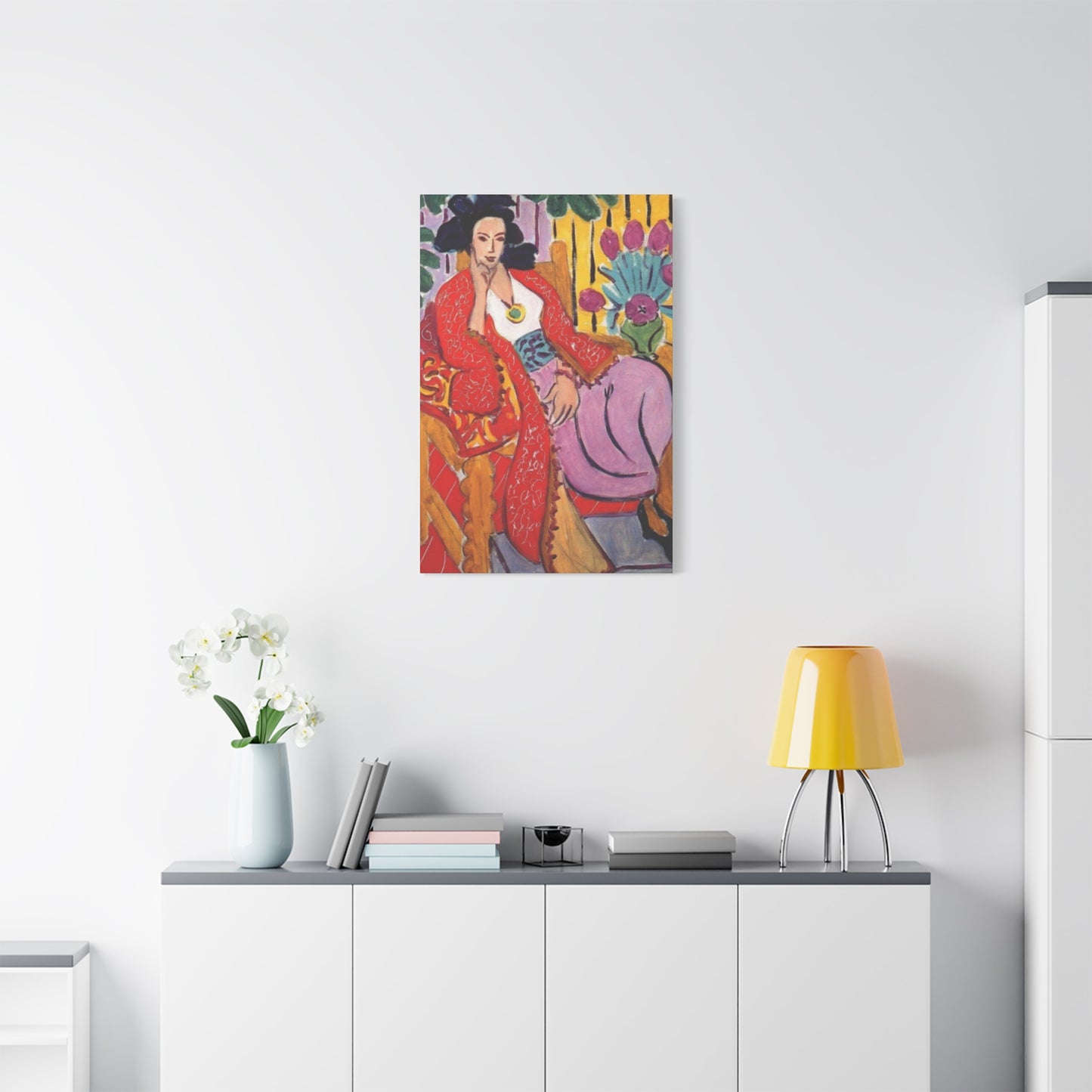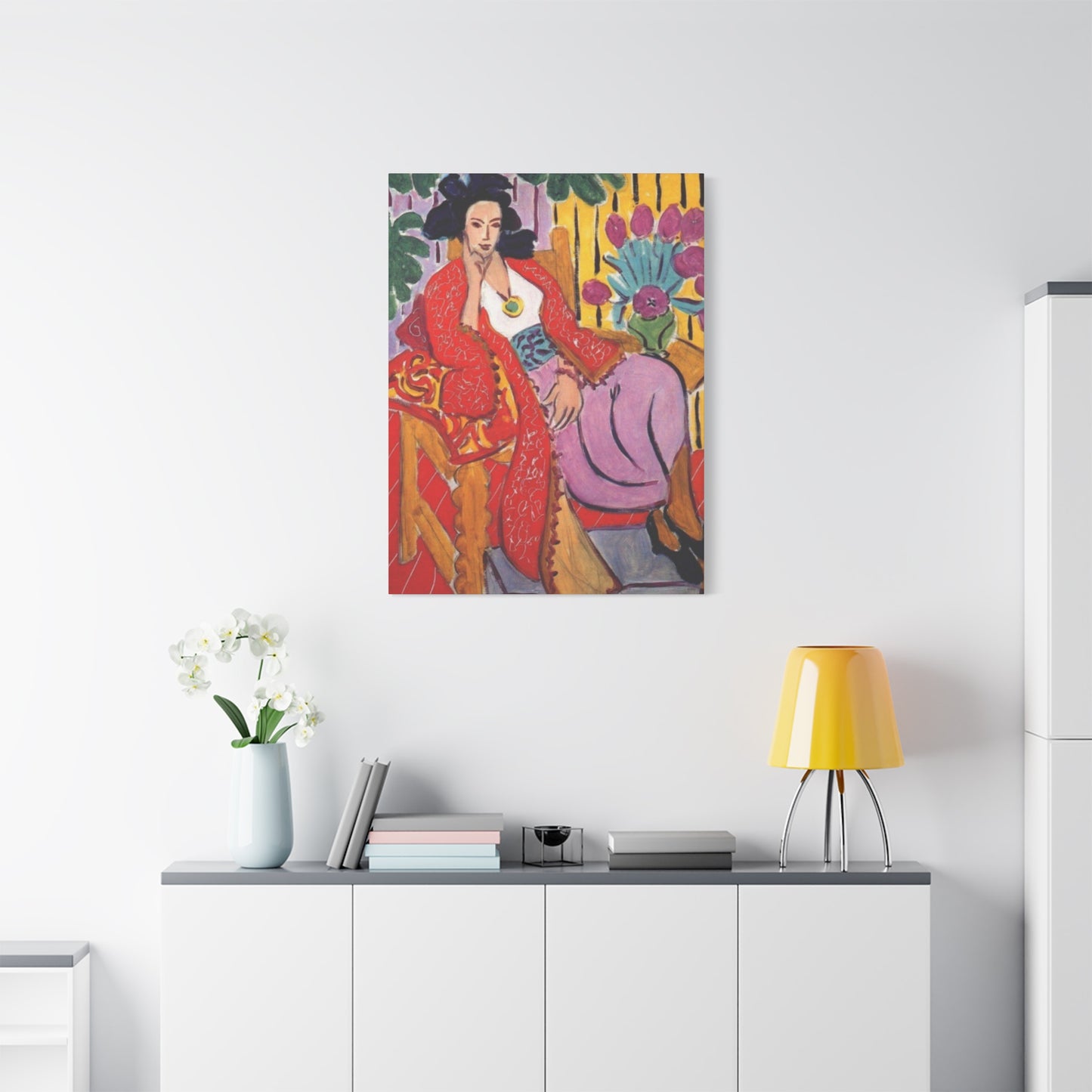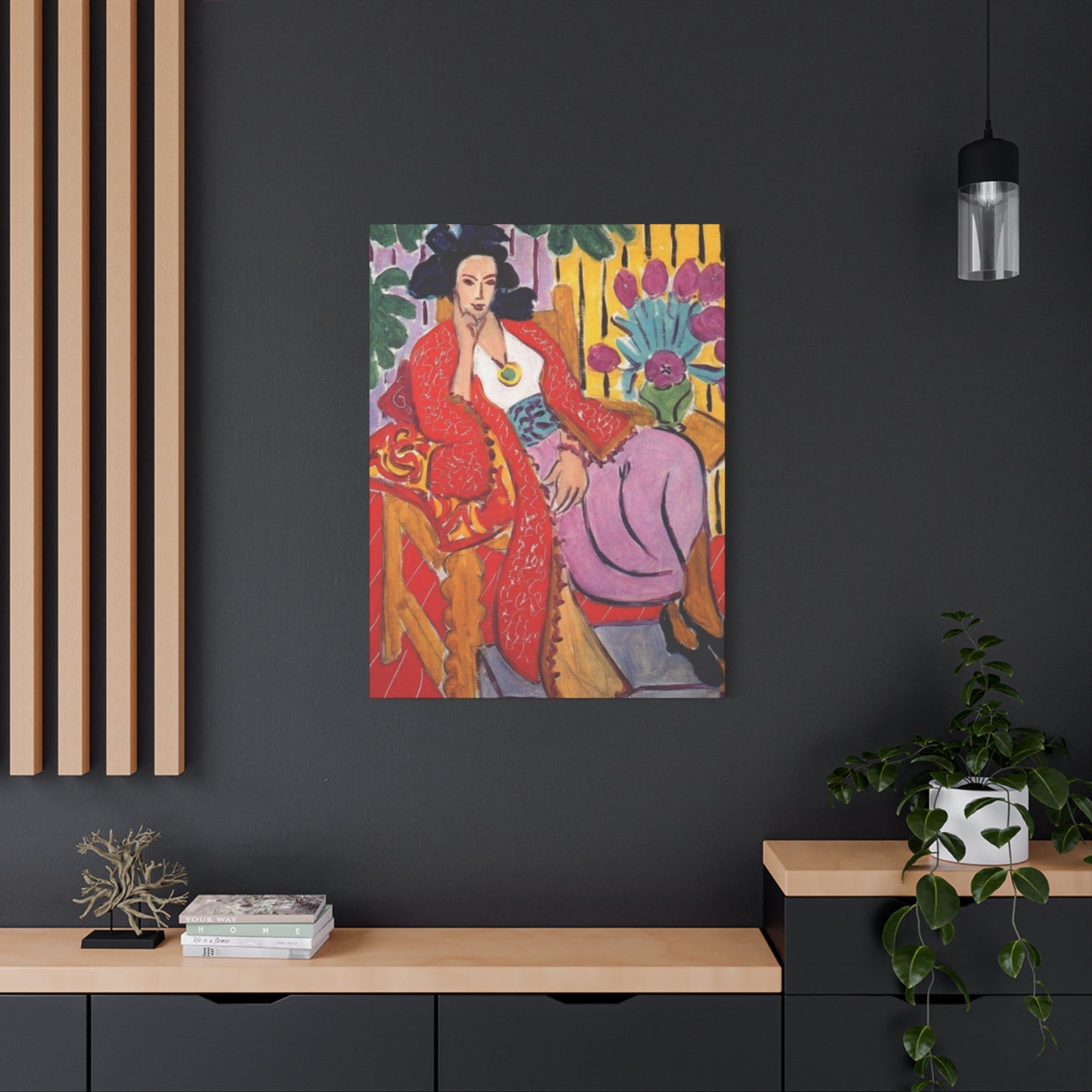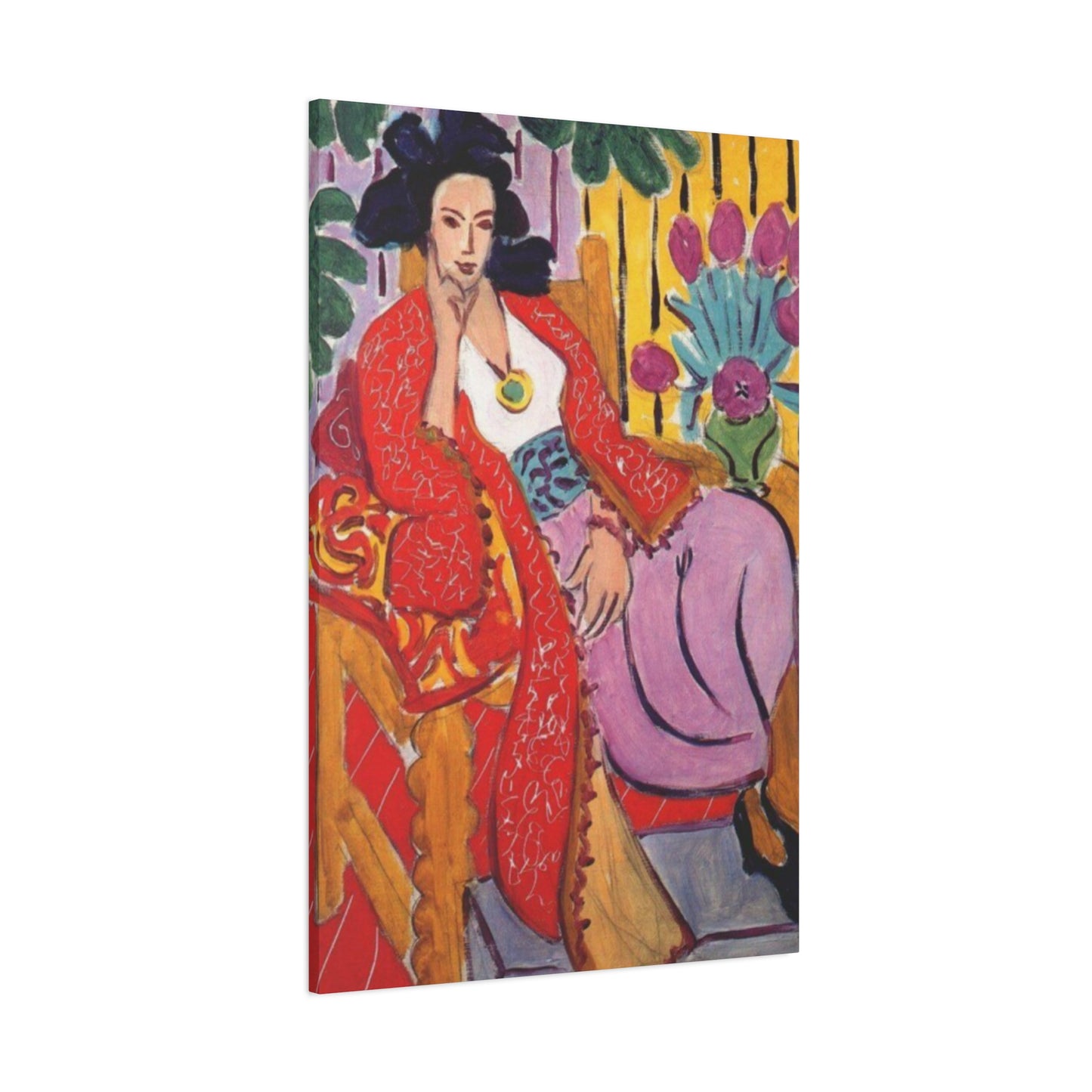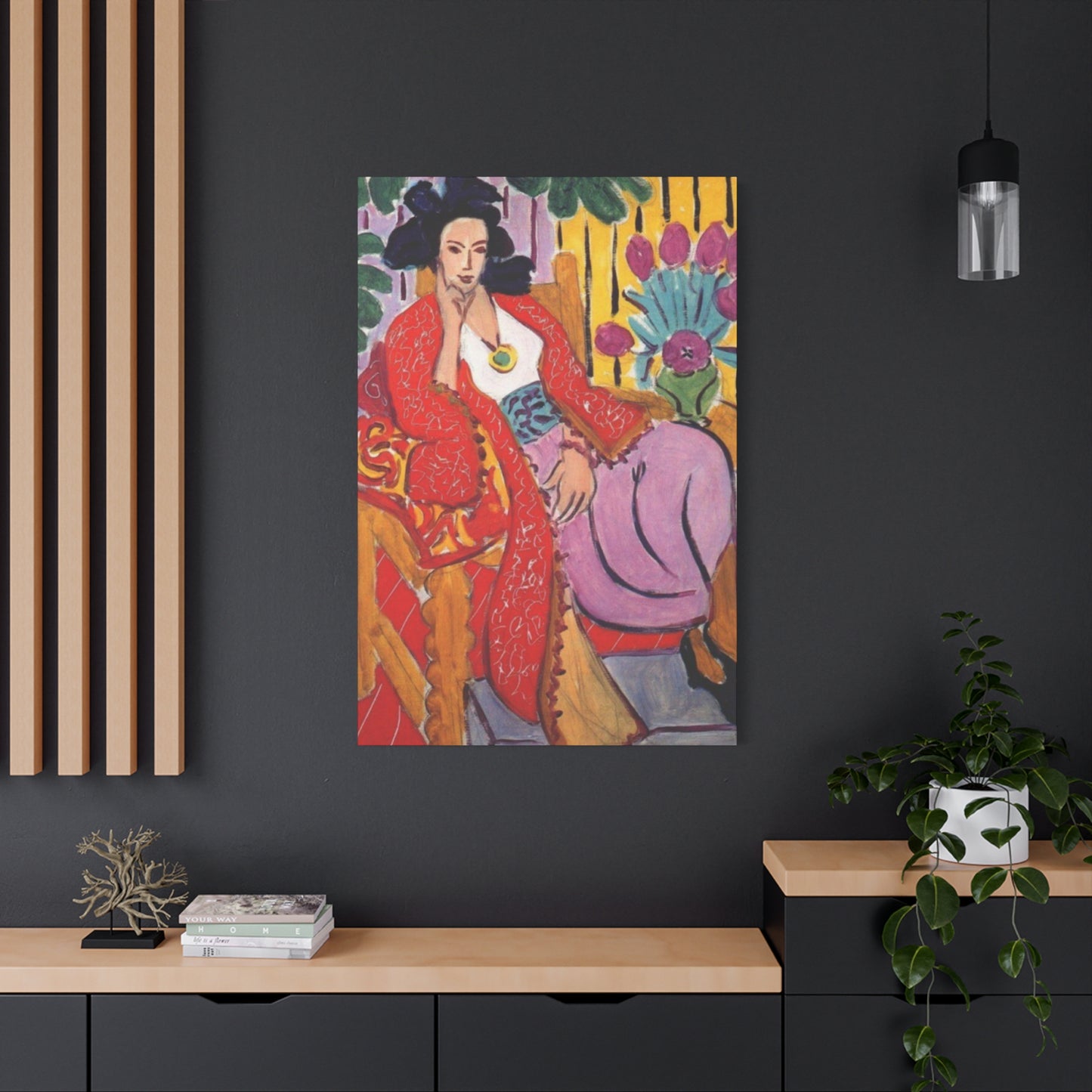Asian King Portraits in Abstract Modernism: Stunning Wall Art
The intersection of ancient royal heritage and contemporary artistic expression has given birth to a fascinating realm of wall art that captivates modern collectors and interior design enthusiasts alike. Asian king canvases represent more than mere decorative pieces; they embody a profound dialogue between historical grandeur and modern aesthetic sensibilities. These remarkable artworks seamlessly blend traditional iconography with cutting-edge artistic techniques, creating pieces that speak to both cultural appreciation and contemporary design preferences.
The evolution of royal portraiture in Asian art has undergone a dramatic transformation in recent decades. Where once formal court paintings dominated the representation of monarchs, today's artists have embraced abstract interpretations, minimalist approaches, and bold experimental techniques. This shift reflects not only changing artistic trends but also a deeper understanding of how historical symbols can be reimagined for modern spaces without losing their inherent power and significance.
Contemporary artists working in this genre draw inspiration from diverse Asian monarchical traditions, spanning from the elaborate court cultures of ancient China and Japan to the majestic kingdoms of Southeast Asia and the Indian subcontinent. Each cultural tradition brings its own unique visual vocabulary, symbolic elements, and artistic conventions that modern creators skillfully incorporate into their contemporary interpretations.
The Artistic Renaissance of Royal Asian Imagery
The modern renaissance of Asian king canvas art represents a significant departure from traditional representational styles. Artists today are exploring new ways to capture the essence of royal authority, wisdom, and cultural significance through abstract forms, geometric patterns, and innovative color palettes. This artistic evolution reflects a broader movement in contemporary art that seeks to honor historical traditions while making them relevant to modern audiences.
Traditional Asian royal portraits were characterized by their adherence to strict artistic conventions, formal poses, and symbolic elements that clearly identified the subject's royal status. Modern interpretations, however, take creative liberties with these conventions, often focusing on the emotional and spiritual aspects of kingship rather than literal representation. This approach allows for greater artistic freedom while maintaining deep respect for the cultural heritage being referenced.
The use of abstract elements in modern Asian king canvases serves multiple purposes. First, it allows artists to create works that are universally appealing while still maintaining cultural specificity. Second, abstract approaches enable the incorporation of contemporary design principles that work well in modern interior spaces. Finally, abstraction permits a more personal interpretation of royal themes, allowing viewers to connect with the artwork on an individual level while appreciating its cultural significance.
Color psychology plays a crucial role in modern Asian king canvas art. Traditional colors associated with royalty in Asian cultures, such as imperial yellow, deep purples, and rich reds, are often reimagined through contemporary color theory. Artists might use unexpected color combinations or apply traditional colors in new ways to create visual tension and interest while maintaining cultural authenticity.
The integration of modern materials and techniques has also revolutionized the creation of Asian king canvases. Digital art tools, mixed media approaches, and innovative printing techniques allow artists to achieve effects that were impossible with traditional methods. These technological advances have opened new possibilities for texture, layering, and visual complexity that enhance the impact of royal themes.
Heritage Meets Contemporary Design Aesthetics
The successful fusion of cultural heritage with contemporary design aesthetics requires a delicate balance of respect, innovation, and artistic vision. Modern Asian king canvases achieve this balance by maintaining core symbolic elements while presenting them through contemporary artistic lenses. This approach ensures that the cultural significance of royal imagery is preserved while making it accessible and appealing to modern audiences.
One of the most significant aspects of this artistic movement is its ability to bridge cultural gaps. These artworks serve as cultural ambassadors, introducing viewers to Asian royal traditions while presenting them in familiar contemporary formats. This educational aspect adds depth to their decorative function, making them conversation pieces that can spark interest in Asian history and culture.
The symbolic language of Asian royalty is rich and complex, encompassing elements such as dragons, phoenixes, lotus flowers, geometric patterns, and specific color combinations. Modern artists working with royal themes must understand these symbols deeply to use them effectively in contemporary contexts. The most successful pieces demonstrate this understanding by incorporating traditional symbols in ways that feel fresh and relevant without being disrespectful or superficial.
Architectural elements from Asian palaces and temples often find their way into modern king canvases, translated into abstract forms or geometric patterns. These elements might include pagoda silhouettes, ornate window designs, or decorative motifs from royal buildings. By abstracting these architectural features, artists create works that evoke the grandeur of royal settings without literal representation.
The concept of negative space, borrowed from traditional Asian art forms, plays an important role in modern royal canvases. This principle, which emphasizes the importance of empty space in composition, allows modern artists to create powerful visual impact while maintaining the contemplative quality associated with traditional Asian aesthetics. The strategic use of negative space can make royal figures appear more commanding and create a sense of reverence around the subject.
Symbolic Resonance in Modern Royal Wall Art
Symbolism forms the backbone of effective Asian king canvas art, with each element carefully chosen to convey specific meanings and evoke particular emotions. The most impactful pieces layer multiple symbolic elements to create rich, complex compositions that reward careful examination while remaining visually striking from a distance. This multi-layered approach reflects the complexity of royal symbolism in Asian cultures, where every detail carries significance.
The crown, perhaps the most universal symbol of royalty, appears in countless variations across modern Asian king canvases. Artists might abstract the crown into geometric patterns, reduce it to essential lines, or incorporate it into larger compositional elements. The challenge lies in maintaining the recognizability of the crown while presenting it in fresh, contemporary ways that complement modern interior design.
Dragons, long associated with imperial power in East Asian cultures, undergo particular transformation in modern interpretations. Rather than detailed, traditional dragon imagery, contemporary artists might suggest dragon presence through flowing lines, scales rendered as geometric patterns, or colors that evoke dragon mythology. This subtle approach allows the power of dragon symbolism to influence the artwork without overwhelming its modern aesthetic.
The lotus flower, symbol of purity and enlightenment in many Asian cultures, frequently appears in abstract forms within royal canvases. Artists might reduce the lotus to essential curves, use its petal structure as inspiration for geometric patterns, or incorporate its symbolic colors into broader color schemes. This approach maintains the spiritual significance of the lotus while integrating it seamlessly into contemporary compositions.
Calligraphic elements from various Asian writing systems add another layer of symbolic meaning to modern royal canvases. Even when abstracted beyond literal readability, the visual rhythm and flow of Asian calligraphy can evoke cultural authenticity and add visual interest to compositions. Some artists incorporate actual characters or phrases, while others use calligraphic-inspired marks as pure visual elements.
The concept of the mandate of heaven, central to many Asian royal traditions, finds expression in modern canvases through celestial imagery and symbolic representations of divine authority. Stars, clouds, and other heavenly elements might be abstracted into patterns or suggested through color gradients and compositional arrangements that evoke the connection between earthly rule and divine sanction.
Modern Royal Aesthetics
Color choices in modern Asian king canvases carry profound psychological and cultural significance, with each hue carefully selected to evoke specific emotions and cultural associations. The traditional color palette of Asian royalty provides a rich foundation that contemporary artists can build upon, modify, and reinterpret for modern sensibilities. Understanding the cultural meanings of colors allows artists to create works that resonate on multiple levels.
Imperial yellow, historically reserved for Chinese emperors, remains a powerful color choice in modern royal canvases. However, contemporary artists might use yellow in unexpected ways, perhaps as accent colors rather than dominant hues, or combine it with colors that would never have appeared in traditional court art. This approach maintains the cultural significance of imperial yellow while creating fresh visual experiences.
Red, symbolizing good fortune and power across many Asian cultures, appears frequently in modern royal artworks but often in sophisticated variations. Rather than bright, primary red, artists might choose burgundy, crimson, or coral tones that maintain the symbolic power while fitting better with contemporary color schemes. The psychological impact of red creates emotional intensity that enhances the commanding presence of royal subjects.
Purple, long associated with nobility and wisdom, takes on new significance in modern interpretations. Contemporary artists might use purple in gradient effects, combine it with unexpected colors, or use it sparingly as an accent to create visual hierarchy. The regal associations of purple make it particularly effective in creating sophisticated, modern royal artworks that maintain dignity while embracing contemporary aesthetics.
Gold, traditionally used to indicate divine authority and ultimate luxury, undergoes particularly interesting transformation in modern works. Rather than literal gold leaf or metallic paints, artists might evoke golden qualities through warm color temperatures, strategic lighting effects, or subtle metallic accents. This approach suggests luxury and divine connection while maintaining subtlety appropriate for modern interior spaces.
Blue, often overlooked in traditional royal color schemes, has gained prominence in modern interpretations as artists explore its associations with stability, trust, and infinity. Deep navy blues can create sophisticated backgrounds that make other colors pop, while lighter blues can evoke sky and water, connecting earthly royalty with natural elements.
The interplay between warm and cool colors in modern royal canvases creates visual tension that enhances viewer engagement. Artists might use predominantly warm palettes with cool accents, or vice versa, to create compositions that feel both harmonious and dynamic. This temperature contrast can also be used to separate different elements within compositions or guide the viewer's eye through the artwork.
Interpretations of Regal Themes
The minimalist approach to Asian king canvases represents a sophisticated artistic challenge: how to convey the complexity and grandeur of royalty using the fewest possible elements. This aesthetic philosophy, influenced by both modern minimalist movements and traditional Asian concepts of simplicity and restraint, produces artworks of remarkable power and elegance. The success of minimalist royal art lies in the careful selection of essential elements that carry maximum symbolic and visual impact.
Line quality becomes crucial in minimalist royal artworks. A single, perfectly executed line can suggest the sweep of a royal robe, the curve of a crown, or the authority of a gesture. Artists working in this style must master the art of suggestion, using minimal marks to evoke maximum meaning. The influence of Asian calligraphy and ink painting traditions provides a strong foundation for this approach, as these art forms have long emphasized the power of economical mark-making.
Negative space in minimalist royal canvases serves not just as background but as an active element that shapes perception and creates atmosphere. Large areas of empty space can suggest the vastness of royal power, the isolation of leadership, or the contemplative nature of wise rule. The relationship between positive and negative space becomes a crucial aspect of composition that can make or break a minimalist work.
Color reduction in minimalist approaches often leads to monochromatic or limited palette compositions that derive their impact from subtle variations rather than bold contrasts. A minimalist Asian king canvas might use only shades of black and white with a single accent color, or explore the full range of a single color family. This restraint forces viewers to engage more deeply with the work, discovering subtleties that might be overlooked in more complex compositions.
Geometric abstraction offers another avenue for minimalist royal art. Royal symbols might be reduced to their essential geometric components, creating compositions that feel both ancient and thoroughly modern. A crown might become a simple triangle or series of vertical lines, while maintaining enough recognizable elements to convey its meaning. This geometric approach aligns well with modern interior design trends while preserving symbolic significance.
The concept of essence over appearance guides successful minimalist royal artworks. Rather than depicting what a king looks like, these pieces capture what kingship feels like or represents. This philosophical approach requires artists to distill complex concepts into simple visual statements, creating works that operate on intellectual and emotional levels simultaneously.
Texture becomes more important in minimalist works where surface variation might be one of the few elements creating visual interest. Subtle texture changes can suggest different materials, create depth, or add tactile appeal without compromising the overall simplicity of the composition. Modern printing and painting techniques allow for sophisticated texture effects that enhance minimalist aesthetics.
Abstract Expressionism in Royal Portraiture
Abstract expressionist approaches to Asian king canvases liberate royal imagery from literal representation while maintaining emotional and spiritual connections to monarchical themes. This artistic movement, which emphasizes emotional expression over representational accuracy, provides ideal conditions for exploring the psychological and spiritual aspects of leadership and authority. The resulting artworks pulse with energy and emotion while connecting viewers to timeless concepts of power and responsibility.
Gestural mark-making in abstract expressionist royal art can convey the dynamic nature of leadership, the weight of authority, or the internal struggles of rule. Bold brushstrokes might suggest the sweep of royal robes, the commanding gesture of a ruler, or the turbulent emotions that accompany great responsibility. The physicality of the painting process becomes part of the artwork's meaning, with each mark carrying emotional weight.
Color field techniques applied to royal themes create atmospheric works that envelop viewers in emotion rather than presenting them with literal images. Large areas of color can evoke the psychological states associated with power, wisdom, or isolation. The gradual transitions between colors might suggest the complexity of royal decision-making or the weight of inherited responsibility.
Layering and build-up of paint surfaces create rich, complex textures that reward close examination while maintaining visual impact from a distance. These layered surfaces can suggest the complexity of royal roles, the accumulation of wisdom over time, or the multiple responsibilities that rest on royal shoulders. The physical presence of built-up paint adds gravitas to the subject matter.
Spontaneous and controlled elements work together in successful abstract expressionist royal art. While spontaneous marks might capture the inspiration or divine nature of leadership, controlled elements ensure that the work maintains connection to its royal themes. This balance between freedom and structure mirrors the tension between personal expression and public responsibility that defines royal existence.
Scale and proportion in abstract expressionist works can create overwhelming or intimate experiences depending on artistic intent. Large-scale works might overwhelm viewers with the magnitude of royal authority, while smaller, more intimate pieces might invite contemplation of the human aspects of leadership. The choice of scale becomes a crucial element in determining how viewers relate to the artwork.
Color relationships in abstract expressionist royal works often push beyond traditional royal palettes to explore emotional and psychological territories. Unexpected color combinations might reveal hidden aspects of royal psychology or challenge viewers' preconceptions about power and authority. The freedom to explore non-traditional colors opens new possibilities for contemporary relevance.
Contemporary Royal Iconography
The development of contemporary royal iconography represents an evolution in how we visualize and understand monarchical concepts in modern contexts. Today's artists create new visual languages that speak to contemporary audiences while honoring traditional meanings and associations. This process requires deep cultural understanding combined with innovative artistic vision to produce symbols that feel both timeless and thoroughly modern.
Crown imagery undergoes radical reinterpretation in contemporary royal iconography. Rather than literal representations of historical crowns, modern artists might suggest crown forms through architectural elements, geometric patterns, or abstract shapes that evoke the concept of elevation and authority. These new crown symbols work effectively in modern spaces while maintaining their symbolic power.
Dragon motifs, central to East Asian royal iconography, transform dramatically in contemporary interpretations. Modern dragon imagery might focus on specific aspects like scales, claws, or serpentine movement rather than complete dragon forms. Abstract dragon references can appear as flowing lines, geometric patterns, or color choices that evoke dragon mythology without literal representation.
Phoenix symbolism finds new expression through contemporary artistic techniques that emphasize transformation, renewal, and divine feminine power. Modern phoenix imagery might appear as rising forms, flame-like color patterns, or circular compositions suggesting cycles of death and rebirth. The phoenix's association with immortality and renewal makes it particularly relevant to contemporary royal iconography.
Lotus flower symbolism adapts to modern contexts through stylized forms that maintain the flower's associations with purity, enlightenment, and spiritual growth. Contemporary lotus imagery might appear as geometric patterns based on petal structures, color gradients suggesting bloom stages, or abstract forms that capture the essence of emergence from muddy waters to beautiful flowering.
Architectural elements from royal buildings provide rich sources for contemporary iconography. Pagoda silhouettes, ornate window patterns, and decorative roof elements can be abstracted into modern symbols that evoke royal settings without literal representation. These architectural references create immediate cultural connections while working effectively in contemporary compositions.
Calligraphic elements offer another avenue for contemporary royal iconography. Even when abstracted beyond literal meaning, the visual rhythms and cultural associations of Asian writing systems add authenticity and depth to royal artworks. Modern artists might use calligraphic-inspired marks as pure visual elements or incorporate actual characters in innovative ways.
The concept of divine mandate finds expression through celestial imagery that connects earthly rule with heavenly authority. Stars, clouds, and cosmic elements might appear as background patterns, compositional elements, or color choices that suggest the spiritual dimensions of leadership. These celestial references add depth and meaning to contemporary royal iconography.
Fusion of Eastern Heritage and Western Modernism
The successful fusion of Eastern heritage with Western modernism in royal canvas art requires sophisticated understanding of both artistic traditions and their underlying philosophies. This fusion represents more than simple combination of visual elements; it involves creating new artistic languages that honor both traditions while transcending their individual limitations. The most successful fusion works demonstrate how different cultural approaches to art and meaning can enhance rather than dilute each other.
Compositional approaches in fusion works often combine Eastern principles of balance and harmony with Western concepts of dynamic tension and visual hierarchy. Eastern emphasis on negative space and contemplative viewing might merge with Western approaches to focal points and directional movement. This combination creates compositions that feel both peaceful and energetic, satisfying different viewing preferences simultaneously.
Color philosophy presents particularly interesting challenges in fusion works. Eastern color symbolism, with its deep cultural associations and spiritual meanings, must find common ground with Western color psychology and contemporary design preferences. Successful fusion pieces often use traditional Eastern colors in Western compositional frameworks or apply Western color theory to traditional Eastern symbolic elements.
Brushwork and mark-making styles offer opportunities for meaningful fusion. The contemplative, controlled marks of Eastern brush painting traditions can merge with the expressive, gestural approaches common in Western abstract art. This combination might produce works that demonstrate both technical mastery and emotional expressiveness, appealing to viewers familiar with either tradition.
Scale and proportion concepts differ significantly between Eastern and Western artistic traditions, with Eastern art often emphasizing harmony with natural proportions while Western art might deliberately challenge or distort proportional relationships. Fusion works must navigate these different approaches thoughtfully, perhaps using Eastern proportional harmony in overall composition while incorporating Western approaches to emphasis and contrast in specific elements.
Philosophical underpinnings of artistic creation vary between Eastern and Western traditions, with Eastern approaches often emphasizing spiritual expression and connection with natural forces while Western modernism might prioritize individual expression and innovation. Successful fusion works demonstrate how these different philosophical approaches can complement each other, creating art that is both spiritually meaningful and individually expressive.
Material choices in fusion works might combine traditional Eastern materials like rice paper or silk with Western canvas and acrylic paints, creating unique surface qualities that reference both traditions. Modern printing techniques allow for even more sophisticated material combinations, enabling artists to achieve effects that honor both Eastern and Western aesthetic preferences.
The viewing experience of fusion works should accommodate both Eastern contemplative approaches and Western analytical engagement. These pieces might reward both meditative viewing and intellectual analysis, offering different levels of meaning and visual interest depending on how they are approached. This dual accessibility makes fusion works particularly effective in diverse cultural contexts.
Palettes in Modern Royal Art
The use of bold color palettes in modern Asian king canvases represents a dramatic departure from traditional royal color schemes while maintaining emotional and symbolic connections to monarchical themes. Contemporary artists working with royal subjects have embraced color as a primary vehicle for emotional expression and visual impact, often pushing beyond cultural expectations to create works that are both respectful of tradition and thoroughly modern in their appeal.
Neon and electric colors, once unthinkable in royal contexts, now appear in contemporary interpretations as artists explore how traditional concepts of power and authority translate into modern visual languages. Electric blues might suggest the energy of enlightened leadership, while neon greens could evoke growth and renewal under wise rule. These unexpected color choices force viewers to reconsider their assumptions about royal imagery while maintaining symbolic connections to leadership qualities.
Gradient transitions between bold colors create dynamic visual experiences that suggest movement, transformation, and the complex nature of royal responsibility. A gradient from deep royal purple to bright gold might suggest the journey from noble birth to wise rule, while transitions between complementary colors could represent the balance required in effective leadership. These color movements add temporal elements to static artworks.
Color blocking techniques borrowed from graphic design create strong visual impact in modern royal canvases while maintaining accessibility to contemporary audiences. Large areas of saturated color might be arranged according to traditional principles of royal hierarchy or combined in ways that create visual tension and interest. This approach makes royal themes feel immediate and relevant to modern viewers.
Fluorescent and metallic accents add luxury and prominence to bold color compositions without overwhelming their modern sensibilities. Strategic use of these special colors can highlight important symbolic elements or create focal points that draw attention to key aspects of royal imagery. The reflective qualities of metallic colors add dimension and movement to flat canvases.
Color temperature contrasts using bold hues create sophisticated visual relationships that enhance the complexity of royal themes. Warm colors might represent the human aspects of leadership while cool colors suggest the distant, divine qualities of royal authority. These temperature relationships add emotional depth to compositions while maintaining visual excitement.
Psychedelic and vibrant combinations once associated with counterculture movements now find application in royal art as artists explore how color can convey altered states of consciousness, spiritual enlightenment, and transcendent experiences associated with wise rule. These unexpected color relationships challenge traditional notions of appropriateness while opening new possibilities for contemporary relevance.
The interaction between bold colors and neutral backgrounds creates opportunities for sophisticated color relationships that feel both contemporary and respectful of traditional aesthetics. Bold colors might appear as accents against subtle backgrounds, or neutral colors might provide breathing space within predominantly bold compositions. These interactions demonstrate how color balance affects emotional impact.
Textural Elements in Abstract Royal Compositions
Texture plays a crucial role in contemporary Asian king canvases, adding physical presence and visual interest that enhances the emotional impact of royal themes. Modern artists employ various textural techniques to create surfaces that invite both visual and tactile engagement, adding depth and complexity to compositions that might otherwise remain purely visual. The strategic use of texture can transform simple color relationships into rich, multi-dimensional experiences.
Impasto techniques, borrowed from Western painting traditions, add sculptural qualities to royal canvases that suggest the weight and significance of royal authority. Thick applications of paint might represent the heavy responsibilities of leadership or the accumulated wisdom of generations. The physical presence of raised paint surfaces adds gravitas to royal subjects while creating visual interest through light and shadow play.
Collage elements incorporating traditional Asian materials like rice paper, fabric, or metal leaf add cultural authenticity while creating textural variety. These materials might be used sparingly as accents or integrated throughout compositions to create unified textural experiences. The choice of collage materials becomes part of the symbolic content, with each material carrying its own cultural associations and meanings.
Mixed media approaches combine traditional painting techniques with contemporary materials like gel mediums, texture paste, or found objects to create unique surface qualities. These combinations might reference traditional Asian art materials while incorporating contemporary elements that make the works feel current and relevant. The juxtaposition of old and new materials mirrors the fusion of traditional and contemporary themes.
Printing techniques that simulate texture add sophistication to digitally created royal artworks, allowing for textural effects that would be difficult or impossible to achieve through traditional means. Modern printing technology can reproduce the subtle texture variations of traditional brush painting while allowing for contemporary color palettes and compositional approaches.
Layered glazing techniques create depth and luminosity that enhance the spiritual and mystical aspects of royal themes. Multiple transparent layers might suggest the complexity of royal psychology or the mysterious nature of divine authority. These layering effects add visual richness while maintaining the clarity needed for effective symbolic communication.
Scratched or carved surfaces reveal underlying layers and colors, creating textural effects that suggest age, wisdom, or the revelation of hidden truths. These subtractive techniques might be used to suggest the uncovering of royal wisdom or the exposure of essential truths through the removal of superficial elements. The process of revealing becomes part of the artwork's meaning.
Pattern-based textures derived from traditional Asian decorative arts add cultural specificity while creating visual rhythm and movement. These patterns might appear as overall textures or localized details that reward close examination. The integration of traditional patterns into contemporary compositions demonstrates respect for cultural heritage while maintaining modern appeal.
Silhouette Art and Royal Minimalism
The art of silhouette in contemporary Asian king canvases represents an elegant solution to the challenge of creating powerful royal imagery while maintaining modern aesthetic sensibilities. Silhouette art strips away unnecessary details to focus on essential forms and relationships, creating compositions that are both immediately recognizable and open to personal interpretation. This approach aligns well with both traditional Asian aesthetic principles and contemporary minimalist movements.
Profile silhouettes of royal figures offer instantly recognizable imagery while allowing for significant artistic interpretation in their execution and context. The choice of which profile elements to emphasize can dramatically affect the character and mood of the resulting artwork. A strong jaw might suggest determination and authority, while a raised chin could indicate pride or defiance. These subtle variations in silhouette creation allow artists to convey complex character traits through simple forms.
Crown silhouettes work particularly well in minimalist royal art, as the distinctive shapes of various crown types provide immediate royal identification while offering opportunities for creative interpretation. A crown silhouette might be rendered as a simple geometric shape, a flowing organic form, or a complex pattern of positive and negative spaces. The crown's symbolic power remains intact regardless of stylistic interpretation.
Architectural silhouettes incorporating elements from Asian palaces, temples, and royal buildings add environmental context to royal themes without overwhelming minimalist compositions. Pagoda silhouettes, ornate rooflines, or distinctive window shapes can suggest royal settings while maintaining the clean, uncluttered aesthetic that defines minimalist art. These architectural elements anchor royal figures in cultural contexts.
Animal silhouettes representing creatures associated with Asian royalty, such as dragons, phoenixes, or tigers, add symbolic depth to minimalist compositions. These animal forms might appear as background elements, integrated patterns, or companion figures to royal silhouettes. The symbolic associations of royal animals enhance the meaning of compositions while maintaining visual simplicity.
Negative space utilization becomes crucial in silhouette art, with the areas around and within silhouettes carrying equal importance to the silhouettes themselves. The shape and proportion of negative spaces can create additional imagery, suggest movement, or provide breathing room that enhances the impact of positive forms. Mastery of negative space relationships distinguishes sophisticated silhouette art from simple cutout forms.
Layered silhouettes create depth and complexity while maintaining the essential simplicity of the silhouette approach. Multiple silhouette layers might suggest the complexity of royal roles, the presence of advisors or subjects, or the layered nature of authority and responsibility. These layering effects add visual interest without compromising minimalist principles.
Color choices in silhouette art become particularly important since form relationships must carry most of the visual impact. The color of silhouettes against their backgrounds affects emotional tone and symbolic meaning. Black silhouettes against light backgrounds create different psychological effects than light silhouettes against dark backgrounds, and colored silhouettes open additional possibilities for symbolic communication.
Line Art and Geometric Interpretations
Line art approaches to Asian king canvases offer opportunities to explore royal themes through pure drawing and geometric abstraction. These approaches emphasize the fundamental elements of visual communication while creating sophisticated artworks that work well in contemporary settings. The challenge of line art lies in achieving maximum impact through minimal means, requiring mastery of drawing principles and deep understanding of symbolic content.
Calligraphic line work inspired by Asian writing traditions brings cultural authenticity to contemporary royal art while creating visually dynamic compositions. These lines might form actual characters, abstract symbols, or purely decorative elements that evoke the rhythm and flow of traditional calligraphy. The gestural quality of calligraphic lines adds movement and energy to static compositions.
Geometric abstraction of royal symbols creates modern interpretations that maintain symbolic meaning while feeling thoroughly contemporary. A crown might become a series of triangular forms, a dragon could be suggested through interlocking geometric shapes, and royal robes might appear as flowing geometric patterns. This geometric approach appeals to modern design sensibilities while preserving cultural significance.
Continuous line drawings that never lift the drawing tool from the surface create unified, flowing compositions that suggest the interconnectedness of royal authority, responsibility, and cultural heritage. These unbroken lines might trace the outline of royal figures, create complex pattern systems, or combine multiple symbolic elements into single, flowing forms. The continuous nature of the line becomes part of the symbolic content.
Grid-based compositions organize royal imagery according to mathematical principles that create order and harmony while allowing for complex symbolic relationships. Royal elements might be arranged according to golden ratio proportions, modular systems, or other mathematical principles that create visual satisfaction while supporting symbolic communication. These organizational systems add intellectual depth to artistic compositions.
Perspective and dimensional illusions created through line work can suggest depth, movement, and spatial relationships without relying on color or tone. Royal figures might appear to emerge from or recede into geometric spaces, creating dynamic visual experiences that engage viewers intellectually and emotionally. These spatial effects add complexity to line-based compositions.
Pattern integration combines geometric systems with organic forms inspired by nature and traditional decorative arts. These patterns might appear as background elements, clothing details, or architectural features that add richness to line-based compositions. The integration of pattern systems creates visual rhythm and cultural authenticity.
Scale variations within line-based compositions create hierarchy and visual interest while maintaining the essential simplicity of linear approaches. Important elements might be rendered with thicker lines or larger scale, while supporting elements remain subtle and refined. These scale relationships guide viewer attention while creating sophisticated visual compositions.
Digital Art and Royal Themes
The application of digital art technologies to Asian king canvases has revolutionized the possibilities for royal-themed artwork, enabling effects and approaches that would be difficult or impossible to achieve through traditional means. Digital tools offer unprecedented control over color, texture, composition, and effect while maintaining the cultural sensitivity and artistic sophistication required for meaningful royal art. The key to successful digital royal art lies in using technology to enhance rather than replace traditional artistic principles.
Vector-based artwork allows for precise geometric control and infinite scalability, making it ideal for creating royal symbols that must work at various sizes and applications. Crown designs, decorative patterns, and architectural elements can be created with mathematical precision while maintaining organic flow and cultural authenticity. Vector techniques excel at creating clean, contemporary interpretations of traditional royal imagery.
Digital painting techniques that simulate traditional media enable artists to achieve the look and feel of brush painting, watercolor, or other traditional techniques while maintaining the flexibility and control offered by digital tools. These approaches might combine the gestural qualities of traditional Asian brush painting with contemporary color palettes and compositional structures.
Photomanipulation and composite imagery allow for the creation of surreal and fantastical royal environments that would be impossible to photograph or paint directly. Historical royal portraits might be combined with contemporary backgrounds, or realistic royal figures might be placed in abstract or fantastical settings. These composite approaches open new possibilities for contemporary royal imagery.
3D modeling and rendering capabilities enable the creation of sculptural royal art that can be viewed from multiple angles or animated to show movement and transformation. Royal crowns, architectural elements, or symbolic objects can be modeled with precise detail and then rendered in styles ranging from photorealistic to highly stylized. These 3D approaches add dimensional possibilities to royal art.
Generative and algorithmic approaches use computer programming to create royal artworks based on mathematical systems, random processes, or artificial intelligence. These techniques might generate royal patterns, create variations on traditional symbols, or produce entirely new forms of royal imagery that maintain cultural connections while exploring unprecedented visual territories.
Mixed reality and interactive capabilities enabled by digital technologies allow viewers to engage with royal artworks in new ways. Royal canvases might respond to viewer movement, change appearance based on viewing angle, or provide additional information through digital interfaces. These interactive possibilities create more engaging and educational viewing experiences.
Digital printing and display technologies enable the reproduction of digital royal artworks with unprecedented quality and variety. High-resolution printing can capture subtle color variations and texture effects, while specialized display technologies might present royal artworks with illumination, animation, or other effects that enhance their impact and meaning.
Sensitivity in Modern Royal Art
Creating contemporary Asian king canvases requires careful navigation of cultural sensitivity issues while maintaining artistic freedom and contemporary relevance. Artists must balance respect for traditional cultures with innovation and personal expression, ensuring that their interpretations honor rather than appropriate or trivialize important cultural symbols and meanings. This balance requires deep cultural understanding, artistic skill, and ethical consideration.
Research and cultural understanding form the foundation of culturally sensitive royal art. Artists must invest time in learning about the historical contexts, symbolic meanings, and cultural significance of royal imagery before attempting contemporary interpretations. This research should extend beyond surface symbols to include understanding of philosophical principles, social structures, and spiritual beliefs that inform royal traditions.
Collaboration with cultural experts and community members can provide valuable guidance and feedback during the artistic process. These collaborations might involve historians, cultural scholars, or members of relevant cultural communities who can offer insights into appropriate and respectful approaches to royal themes. Such partnerships can prevent cultural missteps while enriching artistic understanding.
Avoiding stereotypes and oversimplification requires conscious effort to present royal themes with appropriate complexity and nuance. Royal figures should be portrayed as complete human beings rather than exotic curiosities, and cultural symbols should be used with understanding of their deeper meanings rather than as purely decorative elements. This depth of treatment demonstrates respect for the cultures being referenced.
Attribution and acknowledgment of cultural sources should be clearly communicated when artworks draw heavily on specific cultural traditions or historical sources. This transparency allows viewers to understand the cultural contexts of artworks while giving proper credit to the traditions that inspire contemporary interpretations. Such acknowledgment demonstrates respect for cultural heritage.
Contemporary relevance must be achieved without sacrificing cultural authenticity. The most successful contemporary royal artworks find ways to speak to modern audiences while maintaining genuine connections to their cultural sources. This requires understanding how traditional concepts translate into contemporary contexts rather than simply updating surface appearances.
Educational opportunities within royal artworks can help viewers develop deeper appreciation for the cultures being referenced. Artist statements, exhibition materials, or integrated educational elements can provide context that enhances appreciation while preventing misunderstanding. These educational aspects transform decorative artworks into cultural bridges.
Community feedback and ongoing dialogue with relevant cultural communities can help artists refine their approaches and address concerns that might arise. This ongoing engagement demonstrates commitment to cultural sensitivity while providing opportunities for continuous learning and improvement. Such dialogue benefits both artists and communities.
Conclusion
Asian King Portraits in Abstract Modernism represent a striking fusion of historical reverence and contemporary artistic innovation, offering a unique statement piece for any interior. These artworks reimagine traditional royal portraits through the lens of abstract modernism, blending bold colors, geometric forms, and expressive brushstrokes to convey both power and personality. By merging classical imagery with avant-garde design, these pieces create a compelling dialogue between past and present, celebrating heritage while embracing modern aesthetic sensibilities. Such wall art captivates viewers, serving as both a visual centerpiece and a thought-provoking conversation starter.
Incorporating Asian King abstract portraits into interiors allows for the creation of spaces that are both sophisticated and culturally rich. In living rooms or offices, they function as statement pieces that draw attention and inspire admiration. In galleries or creative studios, they foster an atmosphere of artistic exploration and intellectual engagement, encouraging viewers to reflect on history, identity, and artistic interpretation. The versatility of abstract modernism ensures that these portraits harmonize with diverse décor styles, from minimalist contemporary designs to eclectic or industrial interiors, adding depth, vibrancy, and cultural resonance.
The artistry behind these works is characterized by meticulous attention to composition, color, and texture. Artists employ abstract techniques to emphasize emotion, authority, and personality, capturing the essence of the subject while allowing creative freedom to reinterpret traditional portraiture. This combination of abstraction and symbolism transforms each piece into more than decoration—it becomes a narrative, a celebration of leadership, and a homage to cultural history, all expressed through a modern artistic language.
Ultimately, Asian King Portraits in Abstract Modernism elevate interiors by merging cultural storytelling with contemporary design. They offer a distinctive way to honor history while enriching modern living spaces with creativity, color, and sophistication. By featuring such artworks, individuals can express admiration for heritage, showcase bold artistic taste, and create environments that are visually striking, culturally meaningful, and emotionally engaging—making it a timeless and powerful addition to any wall.

















